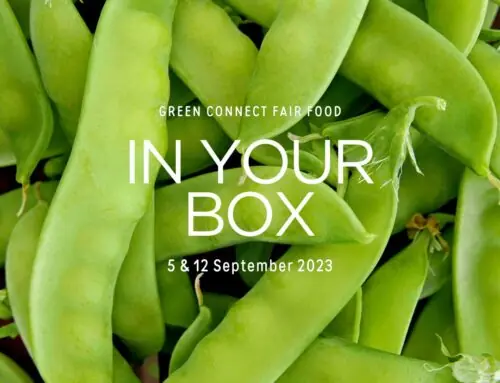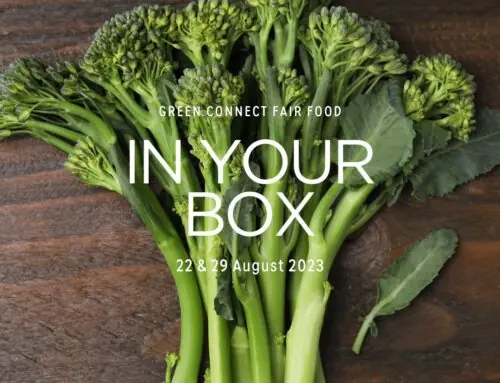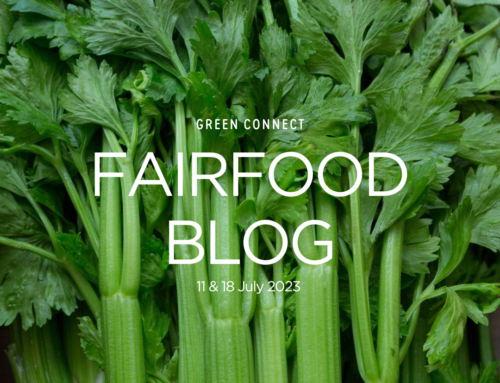 If you’ve heard about permaculture and are wondering what it’s all about, then this is your brief introduction!
If you’ve heard about permaculture and are wondering what it’s all about, then this is your brief introduction!
At Green Connect’s urban farm, we grow food and raise livestock based on permaculture principles. Central to permaculture are the ethics of people care, earth care and fair share. This means that along with taking care of the earth, we need to equally take care of people.
Founded by Bill Mollison and David Holmgren, permaculture has been around since the 1970s. They describe it as:
“Consciously designed landscapes which mimic the patterns and relationships found in nature, while yielding an abundance of food, fibre and energy for provision of local needs.”
In the context of our urban farm, permaculture is a low energy way to grow lots of food. But the theory can be applied to much more than just your garden design. The 12 permaculture principles can give us pointers towards living a slower and more sustainable life, in and beyond the garden. Each principle can be interpreted broadly, here are just a few examples of how you might apply them to your backyard or to your life.
The 12 principles of permaculture
1. Observe and interact
Before you take action, start by taking some time to observe what’s happening. If you want to build a garden, watch the space and see which parts get sun and rain and which parts get the wind or shade. Your job becomes so much easier when you can work with nature, rather than spending time and effort tending to plants that are growing in the wrong spot.
2. Catch and store energy
When resources are abundant, it’s smart to store some of them to use later. For example, use water tanks to catch rain, or pickle summer vegetables so they can be eaten in winter. Design your house so the sun heats it throughout a winter’s day, retaining the warmth into the evening.

3. Obtain a yield
Make sure your hard work pays off. If you go to the effort of planting tomato seedlings, watering them and keeping the snails off them, you want to make sure you end up with some fresh tomatoes for your salad. If not, you need to improve your systems. On top of that, think about what yields you might be missing. Is there uncollected fruit, left on the trees in your neighbourhood? Or weeds from the footpath you could collect for your chickens?
4. Apply self-regulation and accept feedback
Climate change is an example of negative feedback telling us to change the way we produce and consume goods. Your garden is its own ecosystem, and some of your interventions might have negative effects on parts of it. Watch your garden closely and listen to what it is telling you. Once you’ve heard the message, accept it and make changes.
5. Use and value renewable resources and services
To make your garden sustainable in the long term, choose energy and materials that replenish themselves. Keep your soil rich and healthy by building up the microbes in your soil with compost, and choose cardboard and newspaper to suppress weeds instead of black plastic.
Sign up to learn more about permaculture!
6. Produce no waste
Remember that old saying: “Waste not, want not”? Have a look at what you throw away and reconsider whether it can be repaired or reused. Take the time to clean and maintain your garden tools so that they last longer. Create closed loops — feed your food scraps to the chickens, they produce manure, the manure turns into compost and is added to the garden, the garden produces veggies to eat and more food scraps.

7. Design from patterns to details
Observe your daily patterns. What are the foods you and your family love to eat? Which parts of the garden do you walk past everyday on the way to the front gate? Plant your garden in zones, and put the herbs and veggies you use most in the zone closest to your kitchen door where you can access them easily. The things that need less attention can be placed further away.
8. Integrate rather than segregate
 Think of your garden as part of a much wider network of community gardens. You’ll benefit from being able to swap your excess produce, from sharing your tools and learning new skills. Rather than trying to achieve self sufficiency for each household, think about building connections between households and aim for community sufficiency.
Think of your garden as part of a much wider network of community gardens. You’ll benefit from being able to swap your excess produce, from sharing your tools and learning new skills. Rather than trying to achieve self sufficiency for each household, think about building connections between households and aim for community sufficiency.
9. Use small and slow solutions
Have you ever started a new hobby, went out and bought a bunch of new equipment, only to drop the hobby a few weeks later and let the equipment gather dust? It’s better to build your skills and invest slowly as you go. When building a garden, you can gather many materials cheaply or for free if you’re willing to be patient. Going slowly means we save on resources because we won’t buy new things that end up wasted.
10. Use and value diversity
We can describe this principle using the old phrase “don’t put all your eggs in one basket”. Growing a diversity of plants means there is always something for beneficial insects to eat, and protects your garden from pests and disease. Eating a diverse range of foods through our diet also keeps us healthier.

11. Use edges and value the marginal
Balconies, the footpath verge and the edge of the driveway are just a few of the spaces that can be productive. Herbs like nettle and dandelion can be foraged from the edges of footpaths or unused plots of land.
12. Creatively use and respond to change
Nature, like human society, is constantly changing. As we absorb the shocks going on in the world, what changes do we need to make that leaves ourselves and our communities better off?

By permaculturalist, John Champagne from Brogo Permaculture Gardens (pictured).







[…] the north stays shaded for lettuces. Spend at least a week tracking these patterns before planting [2] . This reduces wasted effort and helps you work with, not against, […]
[…] https://green-connect.com.au/heres-your-guide-to-the-12-principles-of-permaculture/ […]
[…] https://green-connect.com.au/heres-your-guide-to-the-12-principles-of-permaculture/ […]